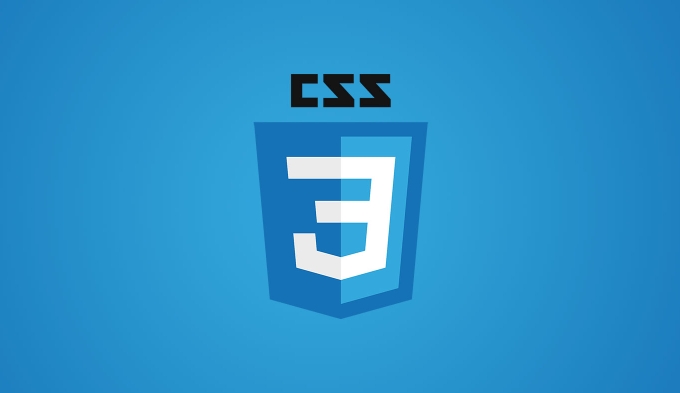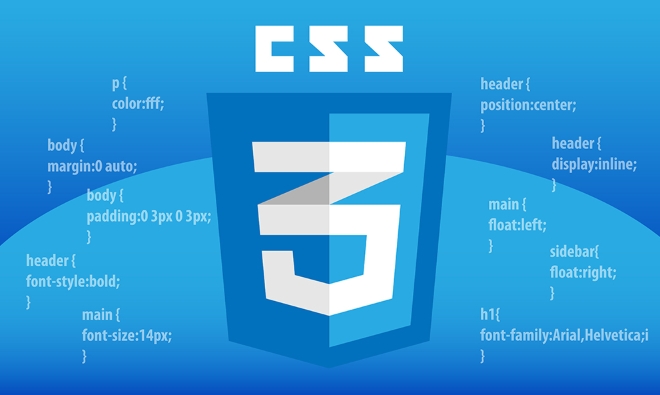Both CSS reset and Normalize.css are used to solve the problem of inconsistent browser styles, but the methods are different. 1. CSS reset provides a blank style base by removing all default styles, which is suitable for projects that require full control of styles; 2. Normalize.css adjusts and unifies the default styles, retaining useful default behavior, suitable for projects that want to reduce duplicate work. The selection depends on the requirements for style control and the type of project.

When you start building a website, browsers apply their own default styles to HTML elements. These built-in styles can vary between browsers, leading to inconsistencies in how your site looks across different platforms. That's where CSS reset and Normalize.css comes into play — they help create a consistent baseline for styling.

What is a CSS Reset?
A CSS reset aims to remove all default browser syling so you start from a blank slate. The idea is to eliminate inconsistencies by striping away margins, padding, fonts, and other styles that browsers automatically apply.
For example:

- Browsers typically give headings (
h1,h2, etc.) different font sizes. - Lists have default padding or margin.
- Paragraphs (
p) have spacing above and below.
A basic CSS reset might look like this:
* {
margin: 0;
padding: 0;
box-sizing: border-box;
}This simple snippet removes default margins and paddings and makes sure the box model behaves consistently.

More advanced resets, like Eric Meyer's Reset CSS , go even further and target specific elements like tables, lists, quotes, and more to ensure complete control over styling.
Pros of using a CSS reset:
- Total control over element appearance.
- Eliminates unexpected default styles.
Cons:
- You lose some useful default behaviors (like list styling).
- May require re-styling many elements that you actually want to keep.
What is Normalize.css?
Normalize.css takes a different approach. Instead of removing all default styles, it makes them more consistent across browsers while preserving useful defaults. It also corrects bugs and common browser inconsistencies.
For example:
- It ensures that
h1elements have the same size across browsers. - It fixes issues with HTML5 elements like
<article></article>and<section></section>. - It improves typography rendering and form element consistency.
Normalize.css is more about harmony than elimination. It doesn't strip everything away — just enough to make things predictable without forcing you to rebuild every style from scratch.
Benefits of Normalize.css:
- Fixes browser-specific issues.
- Preserves useful default styles.
- Keeps HTML5 elements consistent.
Downsides:
- It's not as minimal as a custom reset.
- If you prefer full control, it may leave some styles you don't want.
When to Use Reset vs Normalize
Choosing between a CSS reset and Normalize.css depends on your project and workflow.
If you're building something highly customized and want total control over every element's appearance, a reset might be better. This is especially true if you're using a utility-first framework like Tailwind CSS, which already handles most styling.
On the other hand, if you want a solid foundation that works well out of the box and avoids reinventing the wheel, Normalize.css is a good choice. It helps avoid cross-browser quirks without throwing away helpful defaults.
Here are a few scenarios:
- Use a reset when starting a design system or working with utility-based frameworks.
- Use Normalize.css for general websites where speed and readability matter.
- Don't use either if you're relying heavily on a component library that already includes normalization.
Ultimately, both tools aim to solve the same problem — browser inconsistency — but in different ways. Pick one based on how much control you need and how much work you want to do upfront.
The above is the detailed content of Explain the concept of CSS reset and normalize.css. For more information, please follow other related articles on the PHP Chinese website!

Hot AI Tools

Undress AI Tool
Undress images for free

Undresser.AI Undress
AI-powered app for creating realistic nude photos

AI Clothes Remover
Online AI tool for removing clothes from photos.

Clothoff.io
AI clothes remover

Video Face Swap
Swap faces in any video effortlessly with our completely free AI face swap tool!

Hot Article

Hot Tools

Notepad++7.3.1
Easy-to-use and free code editor

SublimeText3 Chinese version
Chinese version, very easy to use

Zend Studio 13.0.1
Powerful PHP integrated development environment

Dreamweaver CS6
Visual web development tools

SublimeText3 Mac version
God-level code editing software (SublimeText3)

Hot Topics
 CSS tutorial for creating loading spinners and animations
Jul 07, 2025 am 12:07 AM
CSS tutorial for creating loading spinners and animations
Jul 07, 2025 am 12:07 AM
There are three ways to create a CSS loading rotator: 1. Use the basic rotator of borders to achieve simple animation through HTML and CSS; 2. Use a custom rotator of multiple points to achieve the jump effect through different delay times; 3. Add a rotator in the button and switch classes through JavaScript to display the loading status. Each approach emphasizes the importance of design details such as color, size, accessibility and performance optimization to enhance the user experience.
 Addressing CSS Browser Compatibility issues and prefixes
Jul 07, 2025 am 01:44 AM
Addressing CSS Browser Compatibility issues and prefixes
Jul 07, 2025 am 01:44 AM
To deal with CSS browser compatibility and prefix issues, you need to understand the differences in browser support and use vendor prefixes reasonably. 1. Understand common problems such as Flexbox and Grid support, position:sticky invalid, and animation performance is different; 2. Check CanIuse confirmation feature support status; 3. Correctly use -webkit-, -moz-, -ms-, -o- and other manufacturer prefixes; 4. It is recommended to use Autoprefixer to automatically add prefixes; 5. Install PostCSS and configure browserslist to specify the target browser; 6. Automatically handle compatibility during construction; 7. Modernizr detection features can be used for old projects; 8. No need to pursue consistency of all browsers,
 Styling visited links differently with CSS
Jul 11, 2025 am 03:26 AM
Styling visited links differently with CSS
Jul 11, 2025 am 03:26 AM
Setting the style of links you have visited can improve the user experience, especially in content-intensive websites to help users navigate better. 1. Use CSS's: visited pseudo-class to define the style of the visited link, such as color changes; 2. Note that the browser only allows modification of some attributes due to privacy restrictions; 3. The color selection should be coordinated with the overall style to avoid abruptness; 4. The mobile terminal may not display this effect, and it is recommended to combine it with other visual prompts such as icon auxiliary logos.
 Creating custom shapes with css clip-path
Jul 09, 2025 am 01:29 AM
Creating custom shapes with css clip-path
Jul 09, 2025 am 01:29 AM
Use the clip-path attribute of CSS to crop elements into custom shapes, such as triangles, circular notches, polygons, etc., without relying on pictures or SVGs. Its advantages include: 1. Supports a variety of basic shapes such as circle, ellipse, polygon, etc.; 2. Responsive adjustment and adaptable to mobile terminals; 3. Easy to animation, and can be combined with hover or JavaScript to achieve dynamic effects; 4. It does not affect the layout flow, and only crops the display area. Common usages are such as circular clip-path:circle (50pxatcenter) and triangle clip-path:polygon (50%0%, 100 0%, 0 0%). Notice
 What is the difference between display: inline, display: block, and display: inline-block?
Jul 11, 2025 am 03:25 AM
What is the difference between display: inline, display: block, and display: inline-block?
Jul 11, 2025 am 03:25 AM
Themaindifferencesbetweendisplay:inline,block,andinline-blockinHTML/CSSarelayoutbehavior,spaceusage,andstylingcontrol.1.Inlineelementsflowwithtext,don’tstartonnewlines,ignorewidth/height,andonlyapplyhorizontalpadding/margins—idealforinlinetextstyling
 What is the CSS Painting API?
Jul 04, 2025 am 02:16 AM
What is the CSS Painting API?
Jul 04, 2025 am 02:16 AM
TheCSSPaintingAPIenablesdynamicimagegenerationinCSSusingJavaScript.1.DeveloperscreateaPaintWorkletclasswithapaint()method.2.TheyregisteritviaregisterPaint().3.ThecustompaintfunctionisthenusedinCSSpropertieslikebackground-image.Thisallowsfordynamicvis
 How to create responsive images using CSS?
Jul 15, 2025 am 01:10 AM
How to create responsive images using CSS?
Jul 15, 2025 am 01:10 AM
To create responsive images using CSS, it can be mainly achieved through the following methods: 1. Use max-width:100% and height:auto to allow the image to adapt to the container width while maintaining the proportion; 2. Use HTML's srcset and sizes attributes to intelligently load the image sources adapted to different screens; 3. Use object-fit and object-position to control image cropping and focus display. Together, these methods ensure that the images are presented clearly and beautifully on different devices.
 What is CSS and what does it stand for?
Jul 03, 2025 am 01:48 AM
What is CSS and what does it stand for?
Jul 03, 2025 am 01:48 AM
CSS,orCascadingStyleSheets,isthepartofwebdevelopmentthatcontrolsawebpage’svisualappearance,includingcolors,fonts,spacing,andlayout.Theterm“cascading”referstohowstylesareprioritized;forexample,inlinestylesoverrideexternalstyles,andspecificselectorslik






